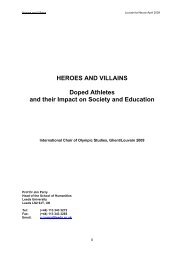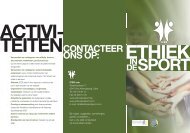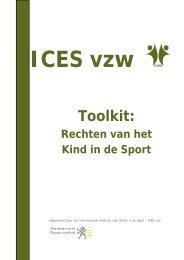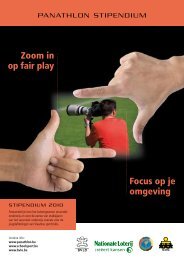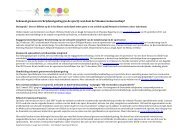Part 3 GLOBAL ISSUES: HARASSMENT AND ABUSE RESEARCH
Part 3 GLOBAL ISSUES: HARASSMENT AND ABUSE RESEARCH
Part 3 GLOBAL ISSUES: HARASSMENT AND ABUSE RESEARCH
Create successful ePaper yourself
Turn your PDF publications into a flip-book with our unique Google optimized e-Paper software.
3.7 Sexual harassment among female athletes in the Czech Republic<br />
Kari Fasting, Trine Thoresen and Nadia Knorre<br />
Background<br />
In this chapter we will present results extracted from a larger study of female<br />
athletes in the Czech Republic. Since the gender order in a society may influence<br />
women’s participation and experiences in sport, in this introduction we will present<br />
some statistics about the gender order in Czech Republic as well as some of their<br />
legislation concerning equal rights and sexual harassment. We think it is important<br />
that the results of the study are interpreted and understood relative to this<br />
information.<br />
The Czech Republic of today is a very young state, founded in 1993. From<br />
1948 until ‘the velvet revolution’ in 1989 it was a totalitarian communist state under<br />
the Soviet Union. In this period the emancipation of women became a part of the<br />
political doctrine. This is perhaps the most significant reason why many people today<br />
do not feel the urge to pursue equal opportunities for girls and women. Research<br />
shows conclusively that women and men do not have equal opportunities either in<br />
sport or in society at large, yet still many believe that the opportunities are equal. For<br />
example, the unemployment rate among women is 40% higher than among men, and<br />
women’s’ salaries average only 73% of men’s, in spite of the fact that women have<br />
as much education as men. 1The representation of women in the Czech Parliament is<br />
only 17% and in the higher levels of government it is no more than 12%. These<br />
statistics are much lower than most European countries, and the gender distribution<br />
in leadership in politics is naturally also mirrored in the sport organizations. Only 8%<br />
of the members in the executive committees in the different Czech sport federations<br />
are women. 2<br />
In the Czech Republic, protection against discrimination based on sex is<br />
provided by various laws, but a specific gender equity law is not yet in place. 3 In<br />
2004, however, an amendment to the labour code took legal effect. This new<br />
amendment states that sexual harassment in the workplace is illegal. It brings the<br />
Labour Code into line with that of other EU nations.<br />
Every year between 30 and 40 children in the Czech Republic die because of<br />
physical violence. Violence against women is looked upon as a natural and common<br />
47<br />
47







